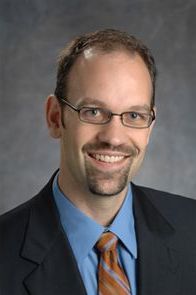 UCLA Associate Professor Benjamin Williams is set to receive the Presidential Early Career Award for Scientists and Engineers (PECASE) for developing devices that generate and control terahertz radiation.
UCLA Associate Professor Benjamin Williams is set to receive the Presidential Early Career Award for Scientists and Engineers (PECASE) for developing devices that generate and control terahertz radiation.
Williams’ name appeared alongside 104 other researchers nationwide on an awardee list issued by the White House on Feb. 18, including two fellow UCLA Engineering professors.
“I was a little surprised and very happy to find out that I was selected,” Williams said. “It’s a really flattering thing, because there are a lot of great people, doing great science and great engineering in the country.”
The project that earned Williams the national accolade is the development new types of quantum cascade lasers to generate radiation with terahertz frequencies (1 THz = 1012 Hz). Terahertz waves are situated between microwaves and infrared on the electromagnetic spectrum. Despite the scientific and industrial success of its neighbors, terahertz waves remain difficult to generate, detect and control. This terahertz gap has intermittently fascinated many researchers for more than half a century. According to Williams, the recent surge in interest in the past 15 years has been fueled by advances in lasers and nanotechnology.
From the point of view of a microwave/RF engineer, THz is a very high frequency. While tremendous strides have been made in developing high-speed electronics based upon nanoscale transistors, generation of THz waves is still limited by the time it takes to move free charge between two electrodes, and the time it takes to charge parasitic capacitances that invariably are present.
Williams, on the other hand, tackles the problem by designing terahertz lasers, which operate on the principle of emitting low-energy THz photons via stimulated emission between two energy levels, and thus don’t require the fast movement of free charge. From the point of view of a laser engineer however, the THz is a very low frequency (equivalent to a long wavelength), and requires a material with a small energy gap. Suitable laser materials don’t exist in nature, so his approach is to engineer artificially nanostructured semiconductor materials that have very closely spaced quantized energy levels.
“These materials are the heart of a so-called quantum cascade laser, where you are essentially engineering layers of semiconductors only a few atoms thick to create “artificial atoms”, materials with custom-designed optical and electrical properties,” Williams said. “We combine these nanostructured semiconductor materials with new types of electromagnetic structures, for example to control the frequency of the emitted radiation, or to steer a THz beam in a particular direction.”
Williams leads the Terahertz Devices and Intersubband Nanostructures Group, where three graduate students and two undergraduates are currently working on related projects. They recently developed a new type of “metasurface quantum-cascade laser”, which shows significant improvement in beam patterns from previous terahertz lasers. Williams said that the focus of the work highlighted by the PECASE award is to make the lasers widely tunable in wavelength to use as a spectroscopic source for chemical identification and astrophysical detectors to analyze star formation and the early universe.
